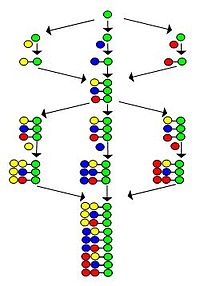In the media, we constantly hear about Artificial Intelligence (AI) advancing for the benefit of society. It is assumed that this advancement will aid us in fields such as healthcare and drug development by simplifying complex human tasks. However, what if it did not? What if this AI was abused to potentially harm society?
Collaborations Pharmaceuticals, Inc. had designed a molecule generator called MegaSyn, which discovers new potential drugs that can target and prevent human diseases through machine learning model predictions. This functions as the AI of the story. Essentially, the model depicts all of the predicted target drugs that are synthesizable, while deleting all of the molecules that are considered toxic to humans. The company proposed the idea that they could synthesize toxic molecules by simply inverting this program. Due to the universal abundance of possibilities, they used VX, which is one of the most toxic biochemical nerve agents developed, as a model to focus the results. In less than six hours, the program produced a model that generated 40,000 molecules that were within the same calibre of toxicity as VX.

A few grains of VX (6-10 mg) are enough to kill a person. Source: Periodic Videos
The Potential Misuse of AI Programs
Although the company did not synthesize any of the molecules in their model, this experiment raises serious concerns over the consequences of AI misuse. There are hundreds of commercial companies with technologies that are able to replicate MegaSyn. Furthermore, another AI program that can make this risk more severe is retrosynthesis software, which can computationally break down a molecule into the steps from which it is synthesizable. Although this model was based on VX-like compounds, it would be simple to look for other toxic molecules through minimal adjustments to the program. The abuse of AI should be alarming because all you need is the ability to code in order to greatly lower the technical skills required to synthesize potentially dangerous biochemical weapons.

Quantitative Structure-Activity Relationship is an example of a similar program that is used for Drug Discovery. You can substitute VX as the molecule to apply to this study. Source: Data Professor
Rapid Synthesis Using Combinatorial Chemistry
Complimenting the advancements on the technological side, there have also been significant advancements on the chemical side in the last century. The development of combinatorial chemistry allows for the synthesis of mass numbers (perhaps millions) of similar compounds within a single process. Essentially, there is a large array of structurally diverse compounds, also known as the chemical library, which interacts with biological targets of interest to simultaneously synthesize thousands of peptides. With the AI-generated model acting as the chemical library with its toxic-focused molecule (such as VX), the process of combinatorial chemistry becomes much more easily accessible.

Combining different structures together using biological target interactions to synthesize multiple compounds. Source: Wikimedia Commons
So, Is This Technology Beneficial Or Not?
The molecule-generating AI program is concerning due to its applications in biochemical warfare. If the program is misused, it can easily be employed in war and cause the loss of thousands of lives, not to mention the environmental impacts of such chemicals. However, this program could just as easily be used for the benefit of mankind. The key is transparency. Collaborations Pharmaceuticals decided to be transparent with their findings and inform the public about the power of their program. Therefore, there is peace of mind that they will use this program for the benefit of drug discovery.
~ Bill Yang

One response to “How to Synthesize 40,000 Biochemical Weapons in Six Hours!”